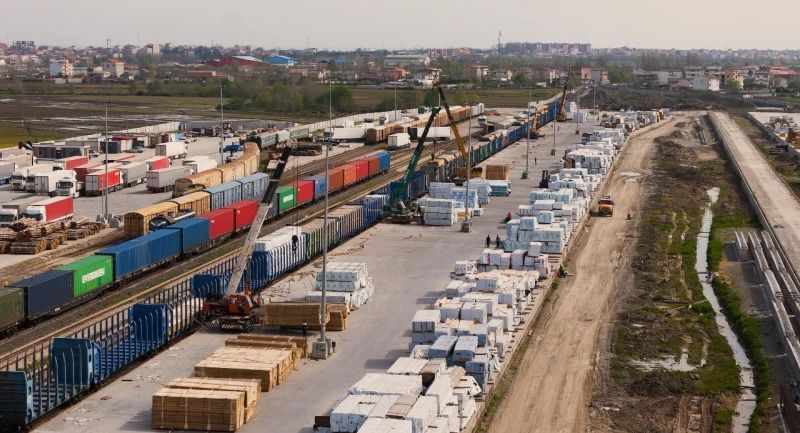Azerbaijan strengthens its logistics future through Astara development

Azerbaijan is steadily transforming itself into Eurasia’s rising logistics power. At the forefront of this shift is the Astara Terminal in Iran—built, managed, and operated by Azerbaijan Railways (ADY). Situated just 1.4 km from the Azerbaijani border in Iran’s Astara city, this facility is poised to redefine cargo connectivity between Russia, Iran, and beyond.
ADY Chairman Rovshan Rustamov and Iran Railways chief Jabbar Ali Zakeri confirmed that nearly 90 percent of the terminal’s design work and 75 percent of construction have been completed, including an 8.3‑km rail link and one completed bridge over the Astarachay River among seven key bridges. Work is slated for completion by the end of 2025 under a “Strategic Cooperation Plan” signed in early 2025.
Already, the terminal is showing strong performance: 692,000 tons of cargo were handled in 2023, rising to over 777,000 tons in 2024. Once fully operational, it will boast a capacity of 3.5 million tonnes per year, with some estimates targeting as much as 4 million tonnes. This expansion is not just about numbers; it’s about strategic impact. The Astara Terminal is a keystone of the North–South corridor stretching roughly 7,200 km from India through Iran and Azerbaijan to Russia and Northern Europe. ADY reports a 28 percent increase in transit freight traffic along this corridor in 2024, totaling 814,000 tons and promising even greater growth ahead.
Once the Rasht–Astara railway is completed in Iran—a $1.6 billion project largely financed by Russia—it will eliminate the corridor’s final missing link, dramatically boosting throughput toward India and the Gulf.
Why this matters:
-
Diversifying Eurasian transit beyond Russia-centric routes. The Astara Terminal offers efficient alternatives to the congested Suez Canal or the embattled northern logistics options.
-
Strengthening Azerbaijan’s role as a regional hub. Leasing 35 hectares in Iran for 25 years, Azerbaijan is no longer a passive transit state but a key operator in a trilateral transport network.
-
Economic leverage. With transit cargo-rates expected to rise by 10–15 percent through 2025, Azerbaijan gains both influence and revenue—benefiting a growing logistics ecosystem.
It is also a diplomatic and geoeconomic signal: Azerbaijan is actively deepening ties with Iran, aligning infrastructure initiatives not just for regional gain but for broader connectivity between Europe and South Asia.
Debates over the corridor's future are only opening. Full terminal commissioning, rail completion, and expanded customs coordination will determine whether cargo flows reach 3.5–4 million tons annually. Once achieved, this infrastructure positions Azerbaijan firmly at the crossroads of North‑South and Middle Corridor trade axes.
For Azerbaijan, the Astara Terminal is more than bricks and tracks—it is the concrete illustration of a national strategy: to become a trusted transit partner, a logistics innovator, and a constructive force in a post‑Suez Eurasian trade era.
Here we are to serve you with news right now. It does not cost much, but worth your attention.
Choose to support open, independent, quality journalism and subscribe on a monthly basis.
By subscribing to our online newspaper, you can have full digital access to all news, analysis, and much more.
You can also follow AzerNEWS on Twitter @AzerNewsAz or Facebook @AzerNewsNewspaper
Thank you!

